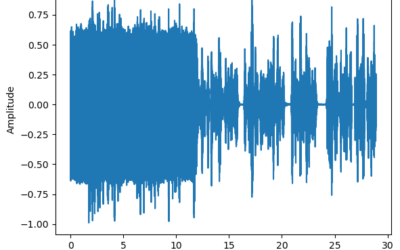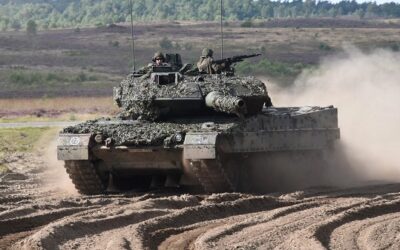FFG & griffity defense partner at AFCEA 2017
Together with FFG Flensburger Fahrzeugbaugesellschaft mbH and other partners from industry and research, griffity defense GmbH will present proposals for “future mission equipment for vehicles of specialised forces,” and “networking of forces” at this year’s AFCEA specialist event.
The mission equipment for vehicles is shown by a demonstration model of a C2-vehicle. The concept is conceived from the Modular Set-Up System of FFG. It is equipped as a mobile command post (scale 1:1) with workstations for the basic functions Reconnaissance (S2), Command (S3), Logistics (S4) and Communication (S6) and it acts as a communication node between the command post and deployed forces, as well as others involved forces. The focus is on the planning and situational awareness in military or police operations, as well as on communication and autonomous energy supply.
The workstations are arranged for example as follows:
Command & Control – S3 Workstation
Digital planning, command & control and debriefing using the Digital Visualisation System of the Fraunhofer IOSB. The system provides automatic fusion, preparation and visualization of geo-data and the integration of further information such as, for example, sensory data from ground- and/or air-supported reconnaissance systems. Using a touch screen and/or gestures, the user can show intuitively stored information on a structured or role-based manner and interact (see also S4 workstation).
The system is optimised for the presentation from different media, from smartphones for the on-site force up to big wall displays in the management centre and thus facilitating the working in the team.
The NanoPAK i7 computer from Themis is used to store the map data and symbol libraries, as well as the evaluations and reports from the S2 area. Themis computers and switches, due to their compactness, are suitable in cases where space, weight, power and costs play a special role.
Reconnaissance – S2 Workstation
The S2 functionality is shown from 2 examples:
Interactive retrieval of overflight data from a wide-area sensor
Generation and presentation of results from the CRS-8000 radio monitoring system from Saab Medav Technologies
The CRS-8000 is a modular and scalable system for radio detection and direction finding for various platforms and applications. Results from monitoring and surveillance are displayed to the operator as well as the alarm messages triggered by the system.
Logistics – S4 Workstation
This workstation contains the role-based “Logistics”-view of the Digital Visualisation System (see also S3 Workstation). Here, the corresponding logistic-relevant information is collected, processed and made available to the commander for further assessment and decision-making. From this position, the deployment of logistical forces and other support units (for example, medical services) are planned and managed.
In order to obtain an up-to-date view of the position and status of the vehicles/containers involved in a deployment, an extended tracking system, such as SCC Titan, can be used. It can provide information on the operational readiness states states of assets besides classic personnel blue-force tracking.
Power supply, especially in mobile applications and in remote areas is always a logistical challenge. In this set-up model, SFC Energy AG’s fuel cells are used to power and recharge batteries. This type of power supply is almost noiseless and is thus particularly useful in standing missions (covered investigations).
Communication – S6 Workstation
Tactical communication requires for, language and data transfer, robust networking, seamless scalability and network agility in high-dynamic environments.
The communication subsystem presented here consists of various communication media/technologies, bridged by a gateway. As a result, the deployed forces can communicate with one another across different networks, however the limitations of the individual technologies have to be taken into account.
The gateway function is created by the Tacticall ICS (Integrated Communication System) from Saab International. It is a modular system that enables the seamless integration of different workstations and communication technologies, regardless of whether they are legacy or newly introduced devices. The intuitive user interface ensures reliable operation in any operational setup.
The following transmission systems are presented:
- UHF communication: TrellisWare mobile ad-hoc mesh network; designed for simultaneous transmission of speech and data in highly dynamic environments, such as underground tunnels, on board ships and in buildings; up to over 200 radios in an RF channel possible; 8Mbps IP throughput / channel; up to eight hops; 40km range in one hop demonstrated; shown is the TW-130 WildCat II (vehicle variant from the TSM family of TrellisWare).
- Mobile LTE: with RIDUX / MUP from blackned GmbH, a mobile software-based LTE communication system, there is a reliable, dedicated, secure network with a high transmission rate for voice and data between command stations, vehicles and deployed deployments available for military and police forces. At AFCEA, the company presents the vehicle variant, called Car Integration Kit and the Tacticall Smartphone
- TS 1, which combines a walkie-talkie and a smartphone in one device.
- The HiMoNN (Highly Mobile Network Node) system from VITES GmbH is a reliable, robust ad-hoc network, as it is used in military and police deployments such as field camp, checkpoints, convoys or major events. With HiMoNN, a mobile, broadband and secure communications network can be set up quickly and without any further infrastructure between vehicles and over-area distributed nodes. The transmission of real-time images to remote control stations is easily possible by connecting to public or mobile LTE networks or also via SatCom.
- Satcom-On-The-Move (SOTM): With its SatCom systems, L3-Technologies brings full-mesh and SatCom-On-The-Move capabilities to the tactical level, the flat phased array antennas from VITES GmbH offer the dynamic alignment to the respective satellite even during the movement of the vehicle.
In addition to the vehicle-oriented systems, there is also future-oriented personal equipment shown on the booth:
- Sensor technology: The digital day / night vision goggle LUXITER from AD2V Industries GmbH is specially designed for access operations and combat situations. The goggles can also be worn under the visor and has an additional adjustable infrared lighting for passive and active operation, which can also be used without damaging the system in daylight. The optional 3G/WLAN/GPS or 4G/GPS transceiver ensures the real-time transmission of picture & sound to the command level.
- Communication: The TW-225-01 CheetahNet Mini from TrellisWare’s TSM radio family is a robust handheld device for tactical voice and data applications, especially in difficult RF-environments. It operates in the frequency ranges 1,776 – 1,815 MHz and 2,200 – 2,250 MHz (others in planning) and it can be connected to external platforms such as PCs or Android devices.
For more information please see MILITARY TECHNOLOGY #5/2017 and WEHRTECHNIK #II/2017, available on stand #F-57 at the show; and frequently check back for more NEWS FROM THE FLOOR.

























